< more recent | 8-16 March 2025 | older >
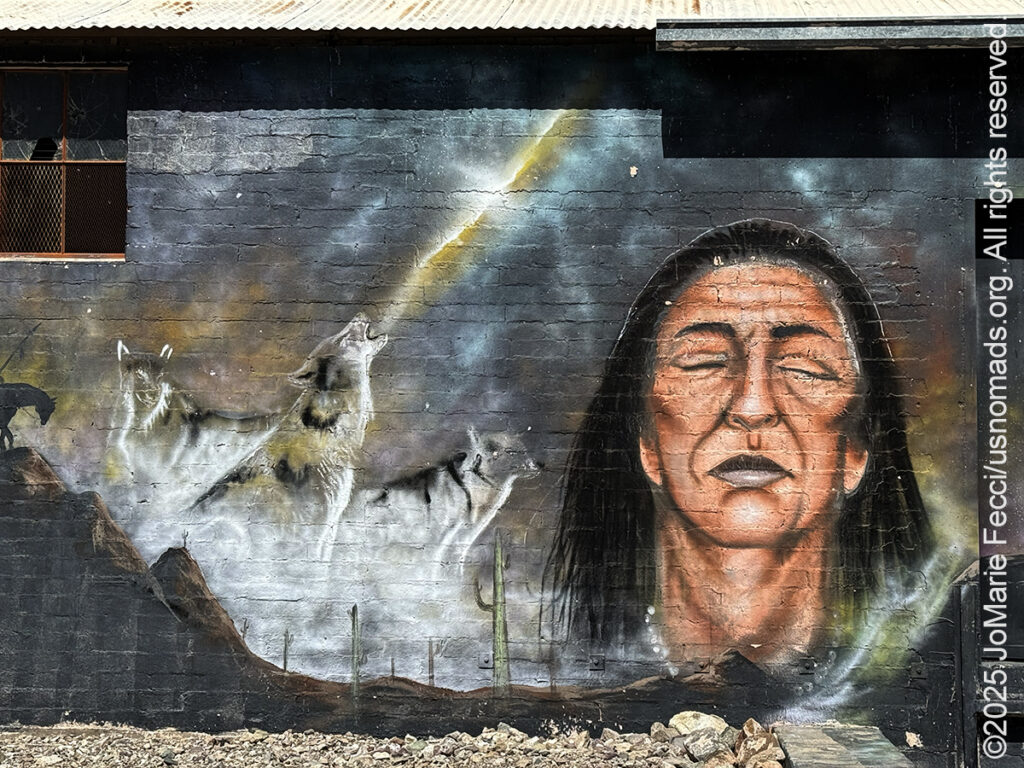
16 March 2025: We had a late morning at camp and enjoyed the desert’s beauty for a little longer before beginning the journey back north with a pause in the town of Ajo, where it turned out there was some kind of festival in the park in the main square. A band played on stage and there were some vendors and people hanging out in the park, but I was more interested in the street art that covered the walls around the old train station. As the day wore on I left this quirky little town and made my way to the outskirts of Mesa before stopping for the night …
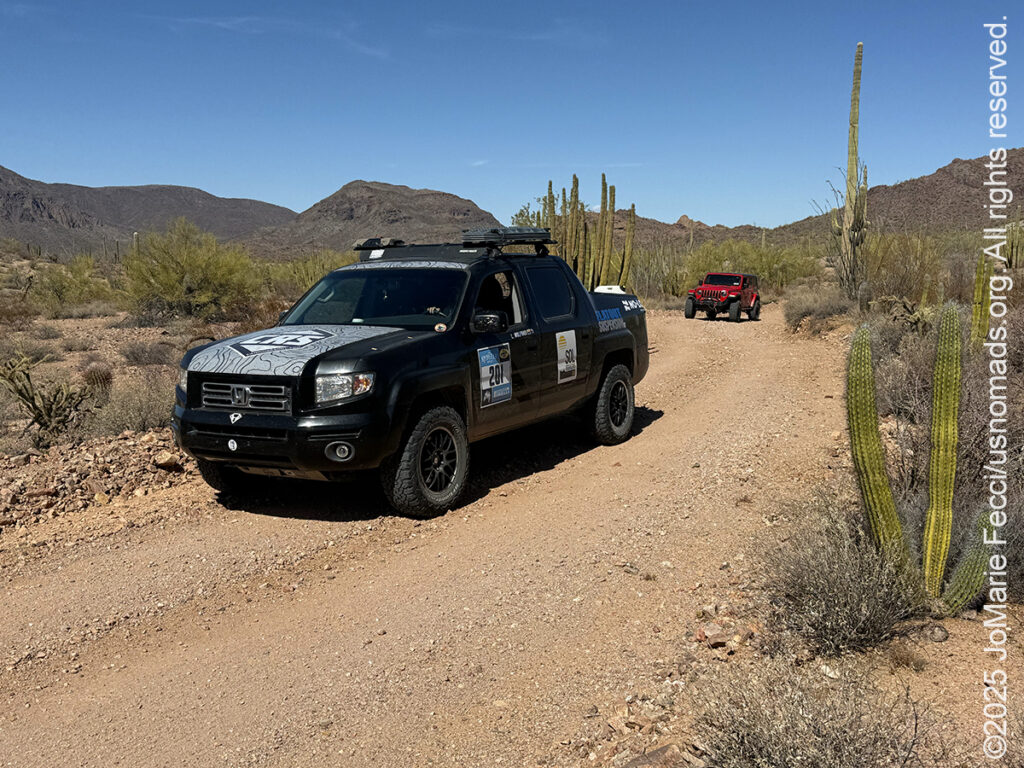
15 March 2025: We had a full day of exploring at Organ Pipe Cactus National Monument and hit the North and South Puerto Blanco loop, driving right up to the border wall fence, where we could see Mexico through the bars. Then late in the afternoon we headed up the Ajo Mountain Drive and caught sunset from Arch Canyon, before returning to the park’s campground ampitheater for a ranger talk about water in the desert. It was a full day, but definitely worth the effort, and we ended it back at our campsite around the campfire …
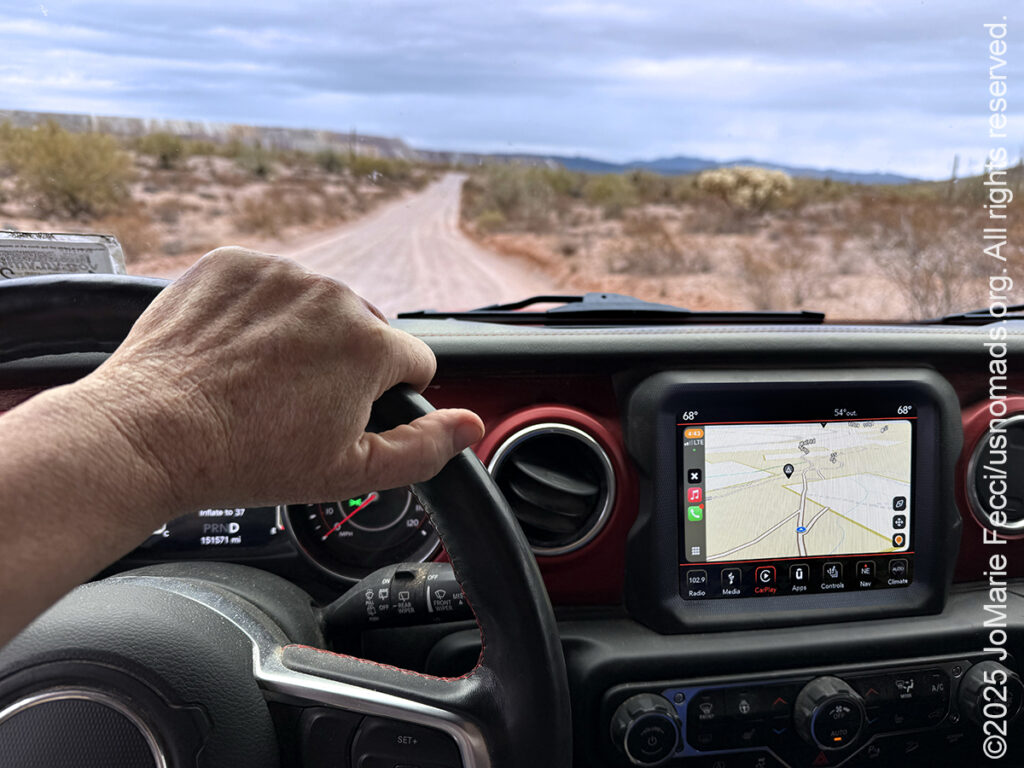
14 March 2025: Meeting up with some friends for camp tonight at the beginning of El Camino del Diablo, though we are not actually doing that trail this time. We will be exploring in a different direction over the next few days, but we decided to set up camp here and found a nice spot on top of a small rise with a 360-degree view. The ocotillos are in bloom and the desert is beautiful…
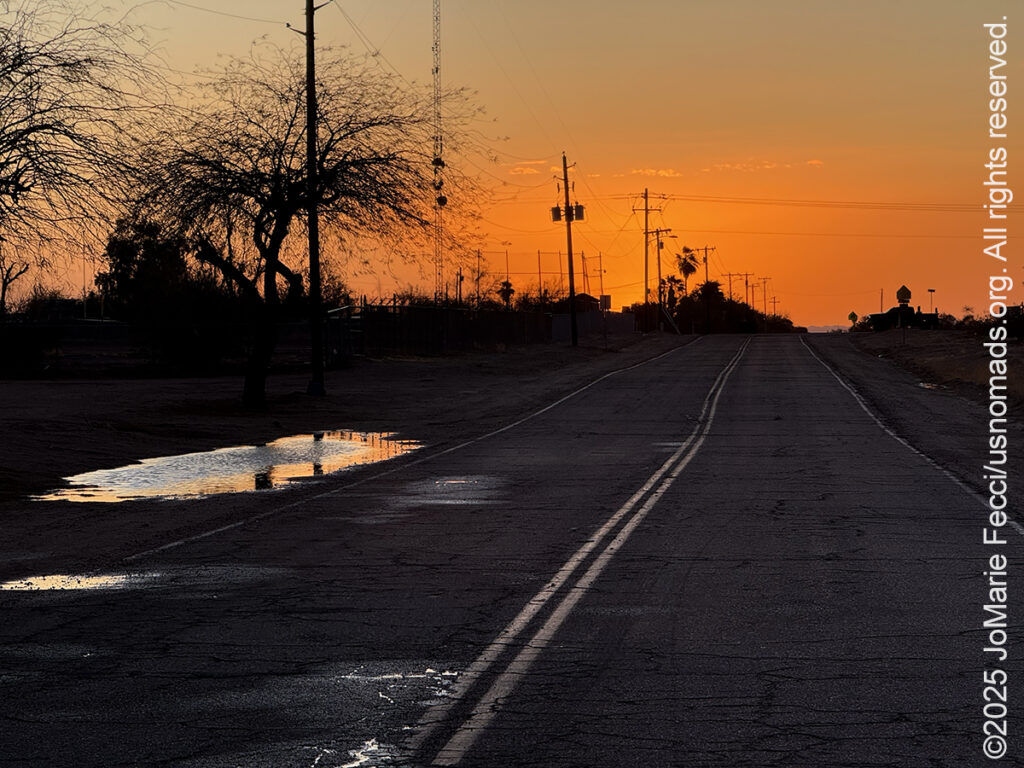
13 March 2025: Well, about that “hopeful omen” from yesterday… It’s Arizona and the weather can go through all four seasons in a day. The journey from north to south took me into a crazy storm of monsoon like rains and fierce winds as we drove along a narrow road heading towards Gila Bend. It was a stressful drive, but by the time the sunset the storm was over and the sky became a solid sheet of orange glowing over the wet landscape…
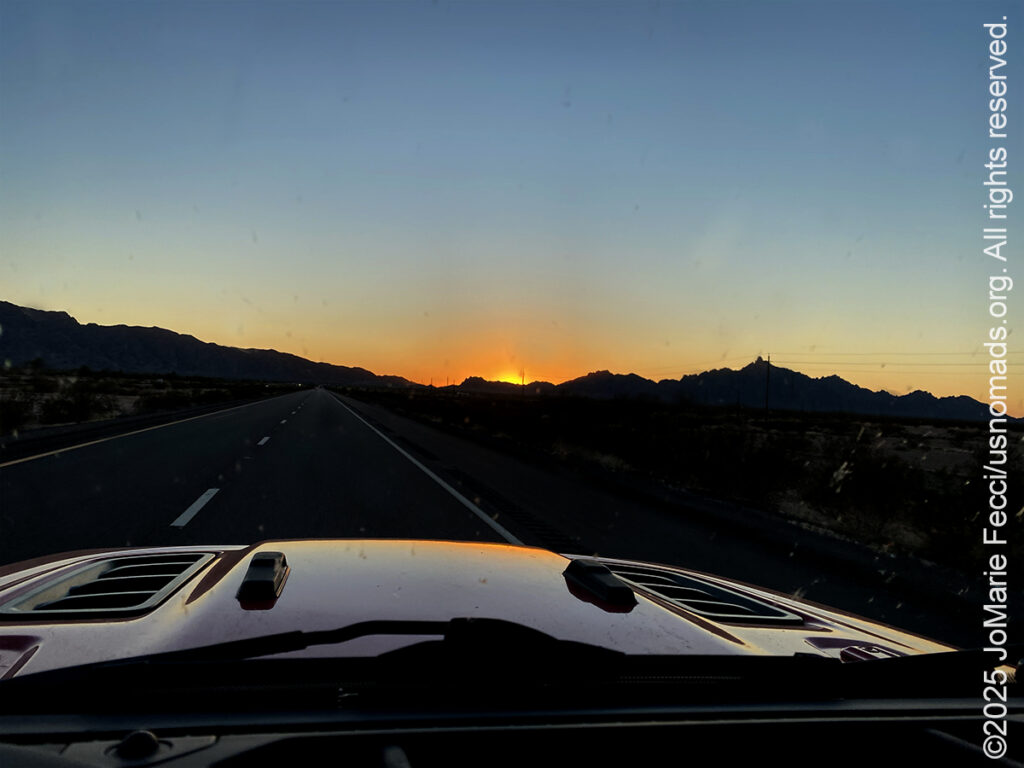
12 March 2025: Got everything together by the end of the day, and managed to catch the last bit of the sunset while driving, and the beautiful light of dusk was a hopeful omen for a nice smooth day tomorrow…
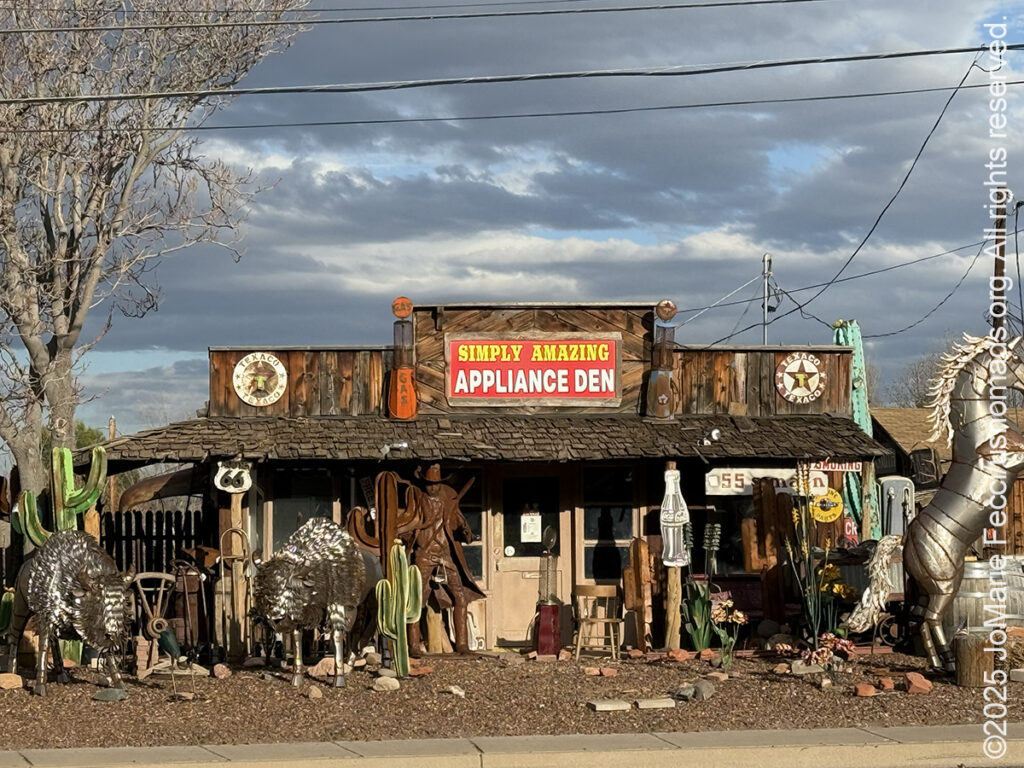
11 March 2025: Getting some important things taken care of during a stopover in the Cottonwood/Sedona area. Needed to service the Jeep and re-supply for the next leg of the journey ahead. It’s always nice to just take a pause to re-energize and catch up on some needed maintenance time, and this is a great little town to do it in. Cottonwood is a bit less touristy than Sedona itself but yet has a lively downtown with plenty of great places to go…
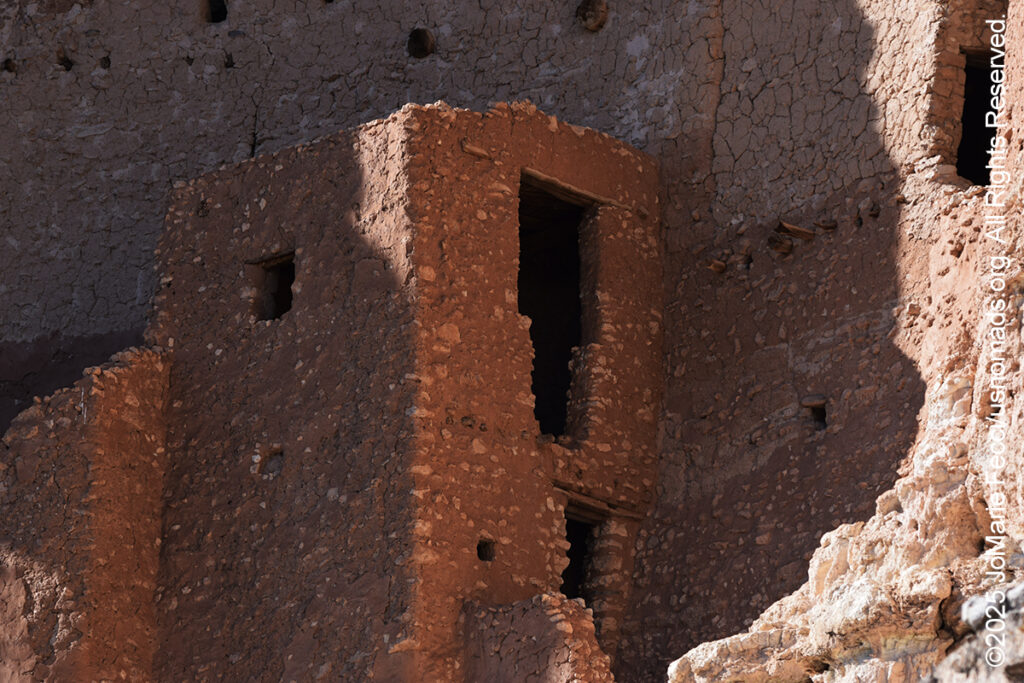
10 March 2025: Made a detour to Montezuma’s Castle National Monument to spend a little bit of time reflecting on the ancient ones. Even though I have been here multiple times, the mood is always slightly different, depending perhaps on the season or the time of day or the way the light hits the stones…
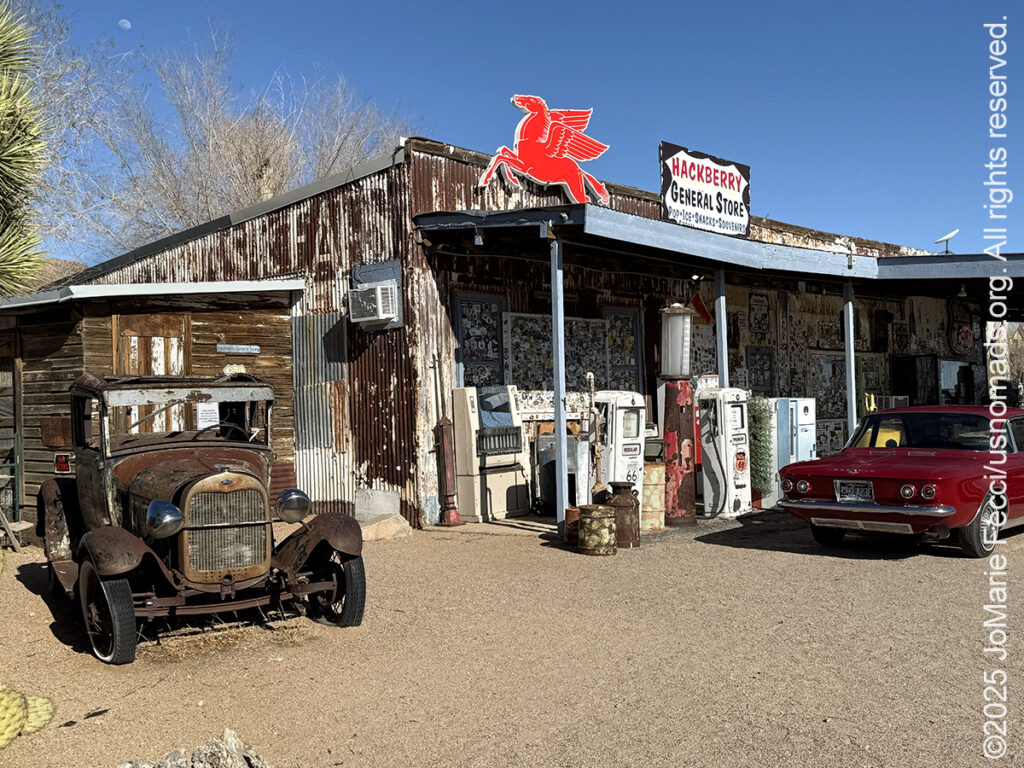
9 March 2025: Broke camp and headed south back into Arizona for the week, and made a little detour to take the “slow road” which is a section of historic Route 66 from Kingman to Flagstaff. One of my favorite stops on this section of the old Mother Road is the Hackberry General Store, which does such a wonderful job of preserving the ambiance of the historic route. It is one of the places along the Route that make it such a fun drive, with genuinely friendly people running the small stop that is half store and half unofficial visitor center. I make it a point to always buy something when they are open, even if just some snacks. The light was really perfect for photographing when I got there today …
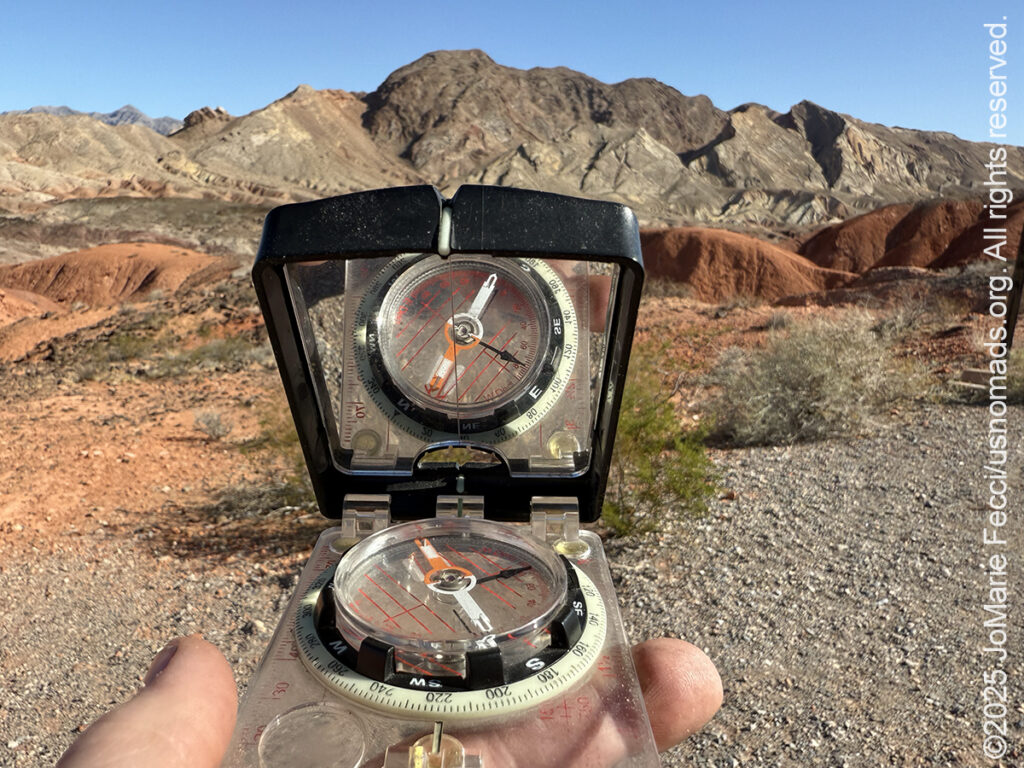
8 March 2025: Took some time today to just go out exploring some favorite locations in this part of the Lake Mead National Recreation Area, following the scenic drive route into the Pinto Valley Wilderness and Redstone. Redstone is really one of my favorite spots here because of all the crazy red rock formations that are just like what we see in the Valley of Fire, but here it is really easy to go hiking in and around and behind and below and on top and from every angle, playing like a kid in a wonderland of carved rock crevices and arches and all kinds of imaginative spaces that seem different every time I am here. I thoroughly enjoyed my “play day” and did a little bit of navigation practice while I was out there, too …
THIS MONTH:

Joining the Barlow Adventures Rebelle Rally training for an intensive sand dune driving and navigation practice at the Imperial Sand Dunes in southern California. This is a seven-day driving and navigation program that focuses on moving safely and effectively through large dunefields with skills-building exercises intended to improve pace, line choice and vehicle control. There is a full classroom day of navigation instruction focused on mapping and understanding the basics of plotting and route planning on paper maps, as well as increasingly challenging in-the-field practice to develop precision map and compass navigation skills. It all culminates in a final day of “chasing checkpoints” out in the big dunes…
COMING UP SOON:
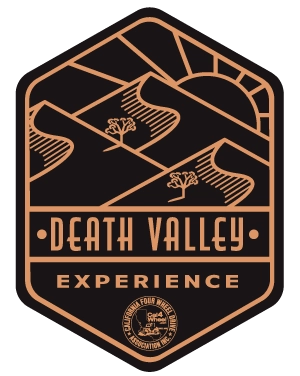
Trail Guiding for the California 4-Wheel Drive Association’s fifth annual Death Valley Experience fundraiser event. Each day will feature a choice of runs to some famous, some infamous and some secretive points of interest within Death Valley National Park. Some of the points of interest we may visit during Death Valley Experience 2025 include Zabriskie Point (famous), Barker Ranch (infamous) and the Racetrack (learn the secret of the moving rocks). Other points of interest include Dante’s View, 20 Mule Team Canyon, Artists’ Drive, Chloride Cliffs, Aguereberry Point, Skidoo, Titus Canyon, and Darwin Falls. All of the trail runs are suitable for novice drivers and SUVs with high clearance and 4-wheel drive…

USnomads.org is very proud to be presenting the fourth edition of the Nomad Overland Virtual Adventure Rally in 2025. This is a unique kind of rally experience — a ten week event that participants can do from anywhere within the continental U.S.A. Competitors design their own routes as part of the rally, then drive it in a points-based online competition that includes optional activity tasks, quests and weekly challenges. The 2025 rally will run from 2 June – 10 August and is open to any driver within the United States who has an off-road capable vehicle — stock or modified. Registration for 2025 is currently open. For more information see the Rally website …
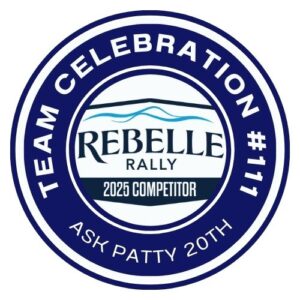
This October JoMarie Fecci of USnomads.org will be joining with Jody DeVere of AskPatty.com to form TEAM CELEBRATION, competing in the 10th Anniversary edition of the Rebelle Rally, as Team 111. Team Celebration will be busy in the coming months, training for the great adventures ahead as they hone their driving and navigation skills and prepare for the mental challenges the Rally will bring …
ORGAN PIPE CACTUS NATIONAL MONUMENT
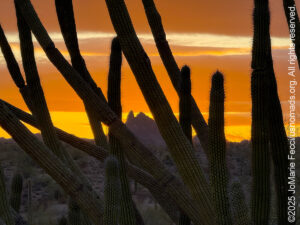
Organ Pipe Cactus National Monument, a UNESCO biosphere reserve, is in southern Arizona along the border with the Mexican state of Sonora. The park is one of the few places in the United States where the senita and organ pipe cactus grow wild. Organ Pipe Cactus National Monument is bordered to the northwest by Cabeza Prieta National Wildlife Refuge and to the east by the Tohono Oʼodham Indian Reservation. Many archaeological sites can be found within the monument. Archaeological evidence places human beings in this area approximately 16,000 years ago. They left behind projectile points, seashells, pottery, and rock art. The Hohokam people’s culture existed in this area from the first years Common Era through 1450. Barely 90 years after the Hohokam culture dispersed across the landscape, the first Europeans ventured into the Sonoran Desert looking for wealth and bringing missionaries to spread of Christianity. Eventually the area became a center of ranching and mining. Mineral mining began in the late 19th Century and was allowed to continue within the borders of the monument up to 1976, and you can still see old prospecting holes, tailings, and buildings. But the most intriguing aspect of the monument is the cactus for which it is named. The organ pipe cactus is a strikingly beautiful plant with multiple narrow stems that rise vertically, growing from a single short trunk just above the ground level. These stems are about 6 inches thick and grow to a height of around 16 feet. These stems rarely branch but rather grow annually from the tip of the last growth. The mature plant can reach a width of 12 feet. Each stem has twelve to nineteen ribs that bear dark brown to black spines that turn gray as it matures. It takes 150 years to reach maturity. The older plants produce funnel-shaped white flowers annually which are open at night and close by the morning and have a purple or pink tint to them. These usually grow during April, May, and June. The organ pipe cactus is usually pollinated by bats. The plant also produces fruit about the size of a tennis ball. Beneath the fruit’s spiny exterior is red flesh that has been described as tasting better than watermelon. This fruit has traditionally been harvested by the Seris, who call the plant ool, and is used as a medicine. The organ pipe cactus is predominantly found on rocky hillsides up to 3,000 feet in elevation…
MONTEZUMAS CASTLE
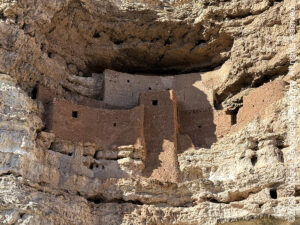
Established December 8, 1906, Montezuma Castle is the third National Monument dedicated to preserving Native American culture. This 20 room high-rise apartment, nestled into a towering limestone cliff, tells a story of ingenuity, survival and ultimately, prosperity in an unforgiving desert landscape. The Monument protects a set of well-preserved dwellings located near Camp Verde, Arizona, which were built and used by the Sinagua people, a pre-Columbian culture closely related to the Hohokam and other indigenous peoples of the southwestern United States, between approximately AD 1100 and 1425. The main structure comprises five stories and about 20 rooms and was built over the course of three centuries. Neither part of the monument’s name is correct. When European-Americans first observed the ruins in the 1860s, by then long-abandoned, they named them for the famous Aztec emperor Montezuma in the mistaken belief that he had been connected to their construction. Having no connections to the Aztecs, the Montezuma Castle was given that name due to the fact that the public had this image of the Aztecs creating any archaeological site. In fact, the dwelling was abandoned more than 40 years before Montezuma was born, and was not a “castle” in the traditional sense, but instead functioned more like a “prehistoric high rise apartment complex”. Montezuma Castle is situated about 90 feet up a sheer limestone cliff, facing the adjacent Beaver Creek, which drains into the perennial Verde River just north of Camp Verde. It is one of the best-preserved cliff dwellings in North America, in part because of its ideal placement in a natural alcove that protects it from exposure to the elements. The precariousness of the dwelling’s location and its immense scale of floor space across five stories suggest that the Sinagua were daring builders and skilled engineers. Access into the structure was most likely permitted by a series of portable ladders, which made it difficult for enemy tribes to penetrate the natural defense of the vertical barrier. Perhaps the main reason the Sinagua chose to build the Castle so far above the ground, however, was to escape the threat of natural disaster in the form of the annual flooding of Beaver Creek. During the summer monsoon season, the creek frequently breached its banks, inundating the floodplain with water. The Sinagua recognized the importance of these floods to their agriculture, but likely also the potential destruction they presented to any structures built in the floodplain. Their solution was to build a permanent structure in the high recess afforded by the limestone cliff. The walls of Montezuma Castle are examples of early stone-and-mortar masonry, constructed almost entirely from chunks of limestone found at the base of the cliff, as well as mud and/or clay from the creek bottom…
Nesconset | Paris | Belgrade | Oklahoma City | Lawton | Amarillo | Yuma | Phoenix | Sedona | Las Vegas | Death Valley
MORE NOTES FROM THE ROAD:
1-7 March – Glamis
22-28 February – Roadtrip SW
15-21 February – Roadtrip SW
1-14 February – New York
January – Paris
23-31 December – Holiday Roadtrip
16-22 December – Holiday Roadtrip
18-15 December – New York
8-30 November – New York
1-7 November – Roadtrip South
23-31 October – Roadtrip South
15-22 October – Roadtrip South
8-14 October – Roadtrip South
1-7 October – Roadtrip South
September – New York
August – New York
26-31 March – Eastbound
20-25 March – NM
15-19 March – DVE
9-14 March – AZ
Archive
ROADTRIP
An epic journey crisscrossing the USA from east to west and back again, exploring some of the beautiful wild spaces that make up our “public lands.” The roadtrip covered almost 15,000 miles, much of it off-grid and off-pavement, focusing on the deserts of the American southwest. Some locations were truly “iconic” while others were little known, and the segments of independent exploration where punctuated with some fun events across the region… [read]
SPECIAL REPORT
All about exploring ghost towns and abandoned places in the USA and beyond, with tips, and information on the many different types of sites to be found across the globe, including detailed guides for eight specific sites… [read]
LOCATION
This installment of a series that focuses on locations around the USA takes a look at some favorite places near our home base in NY. We share a few places we like to explore, where you can experience something of the raw natural beauty of coastal beaches, pine barrens and a little bit of obscure military history… [read]